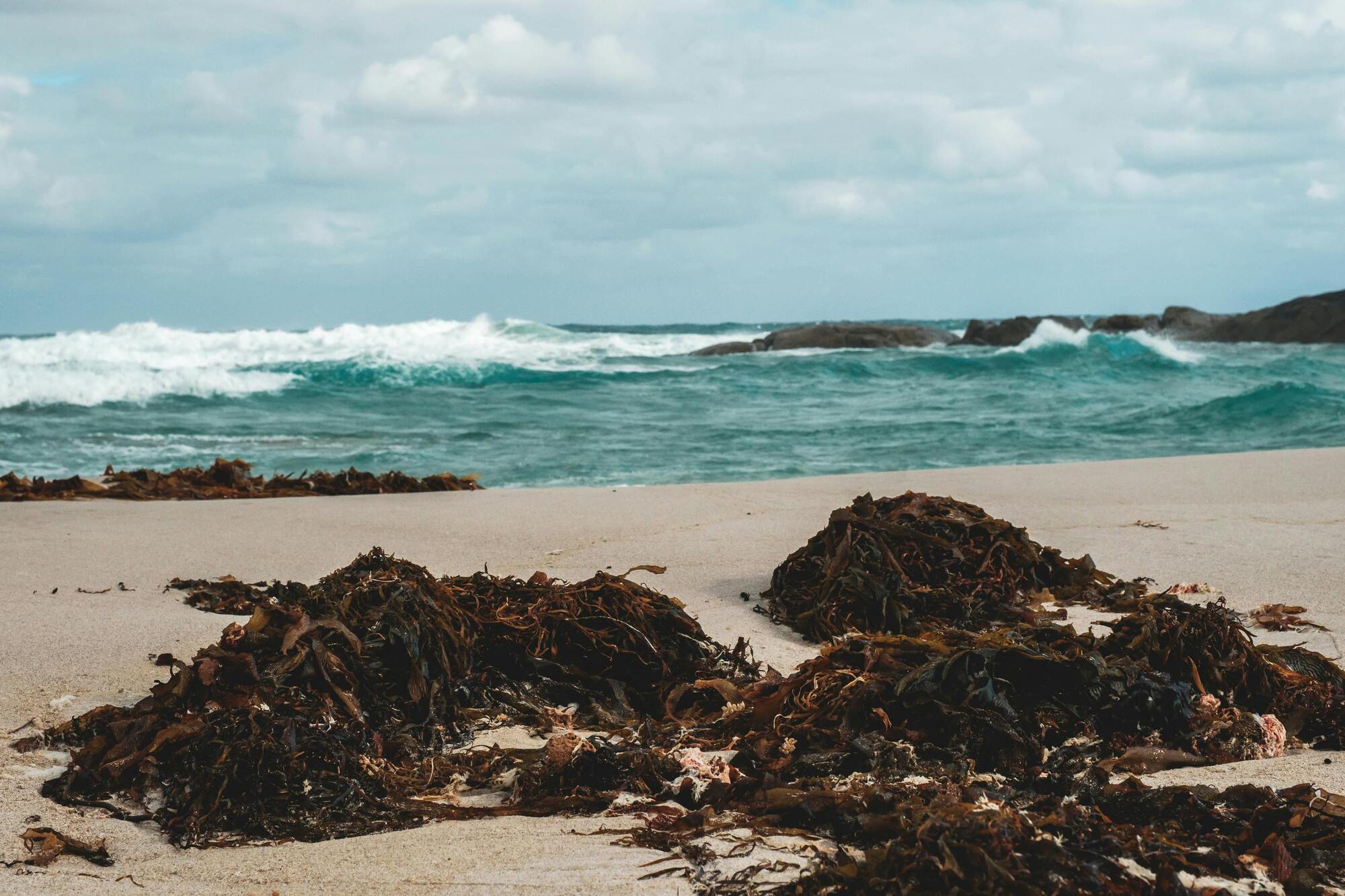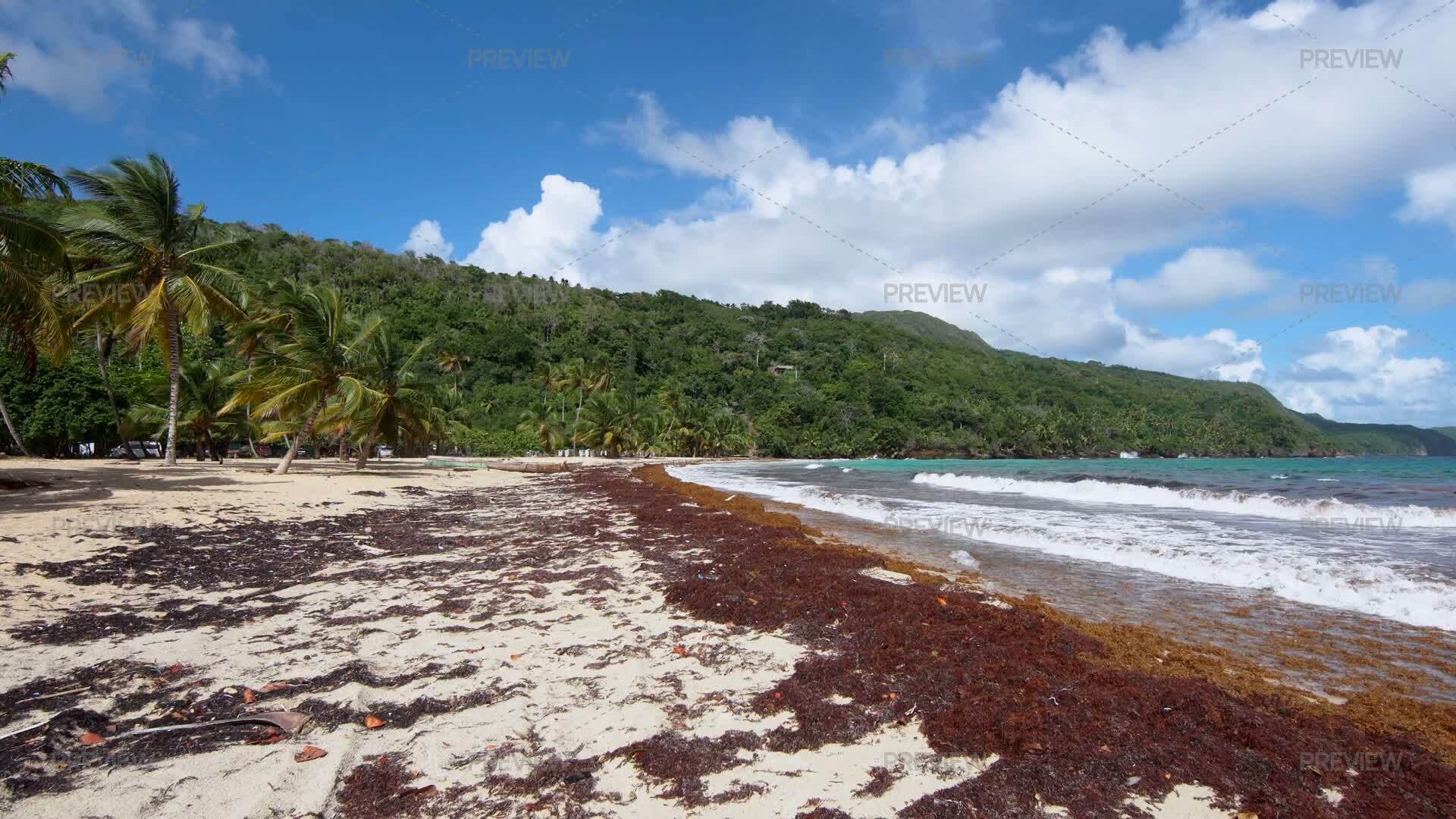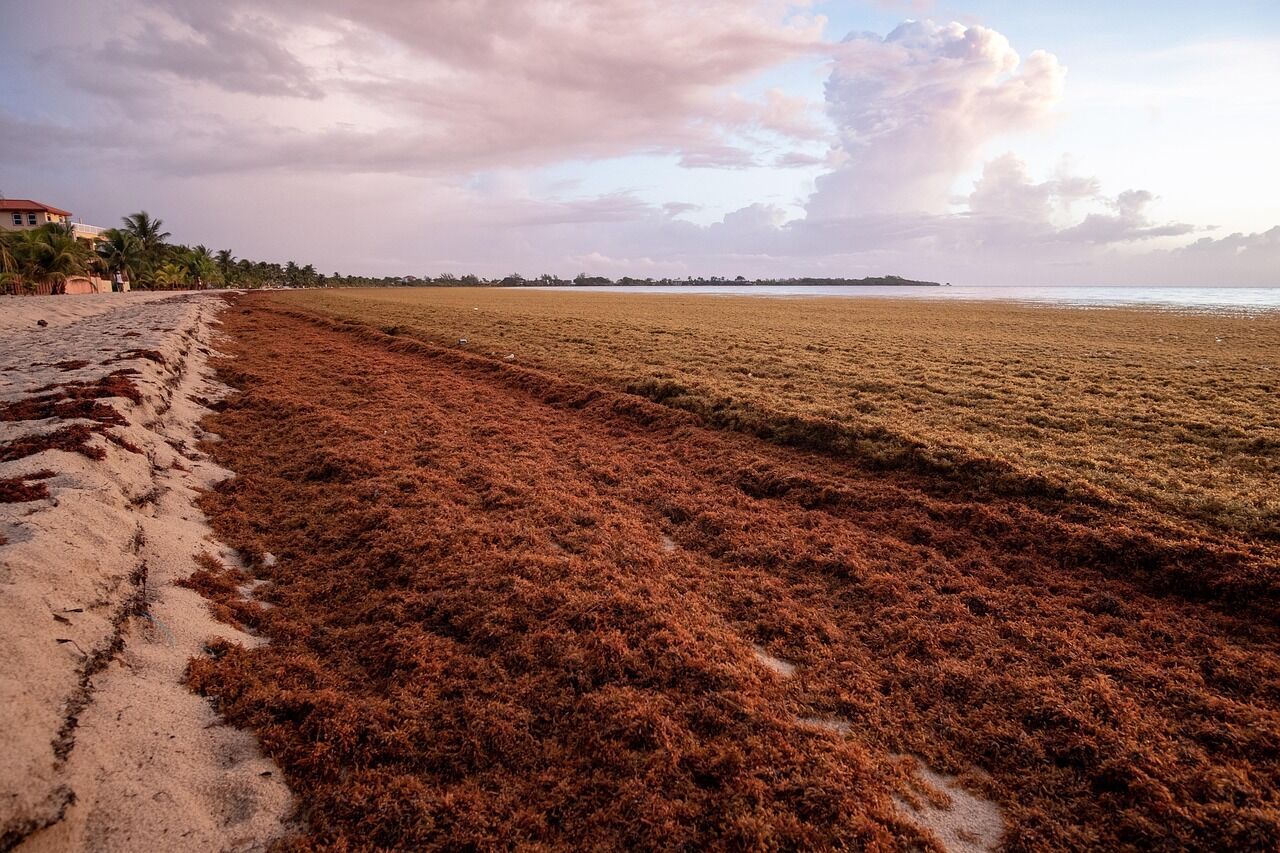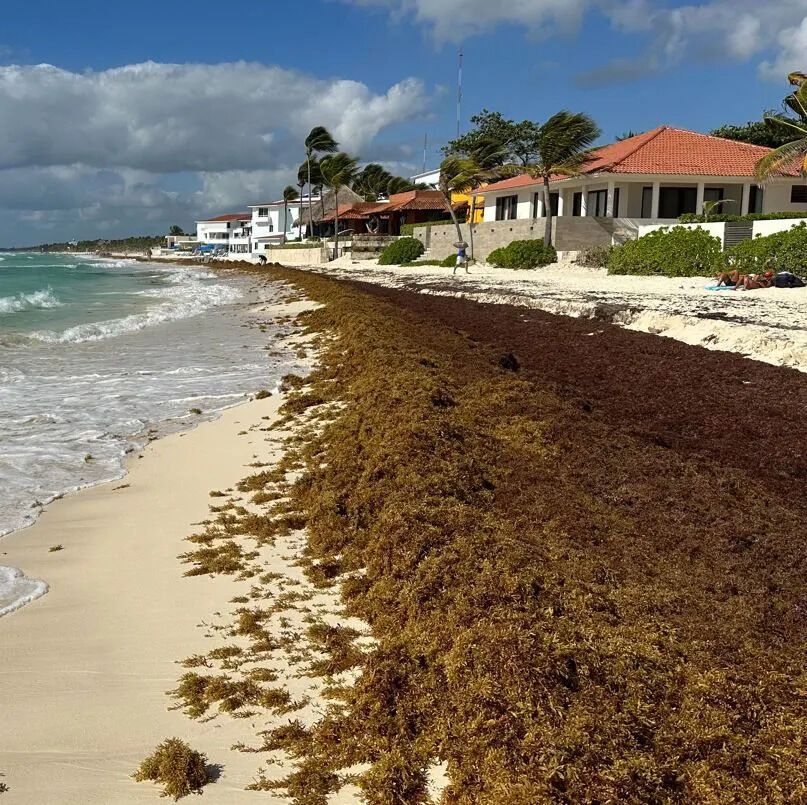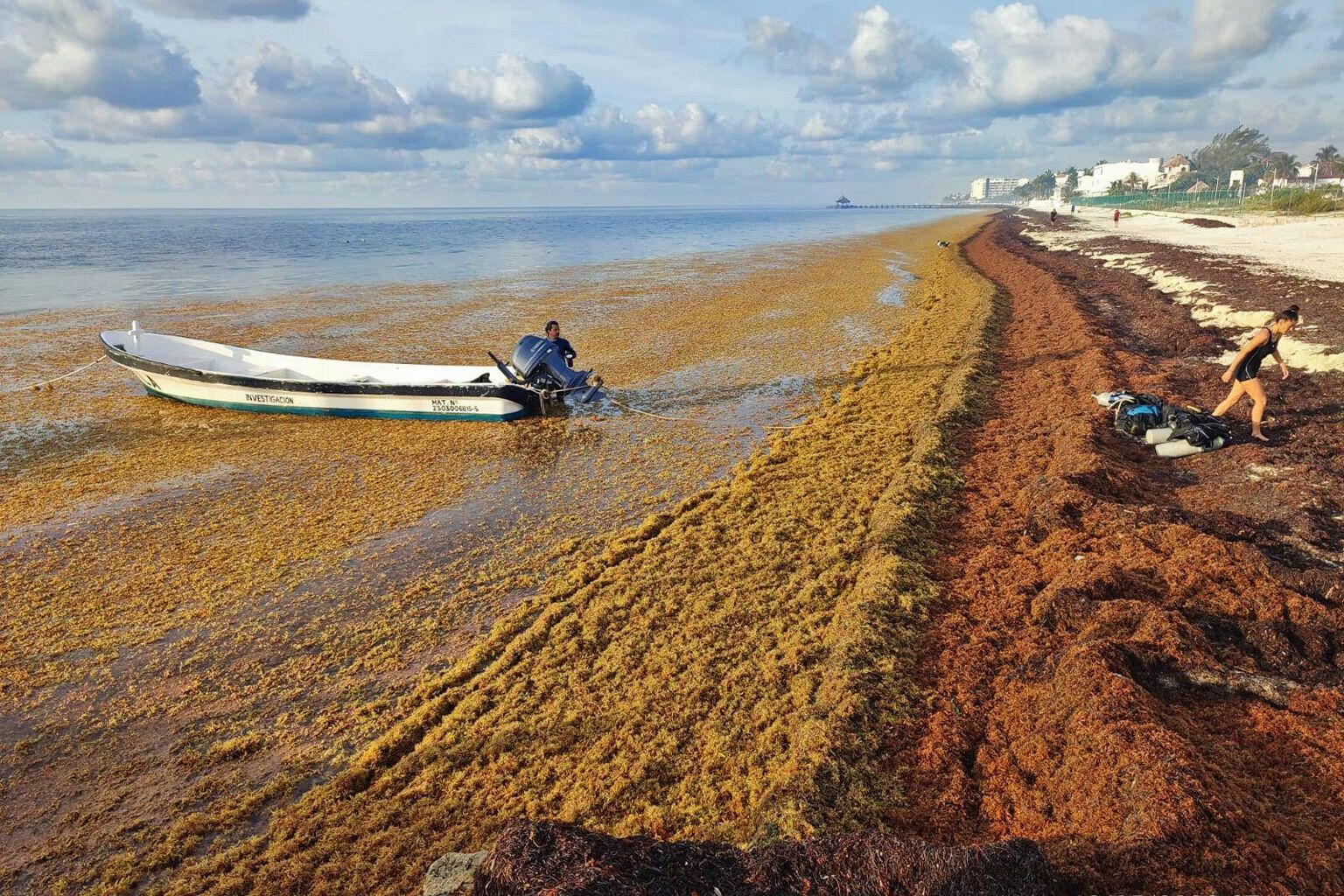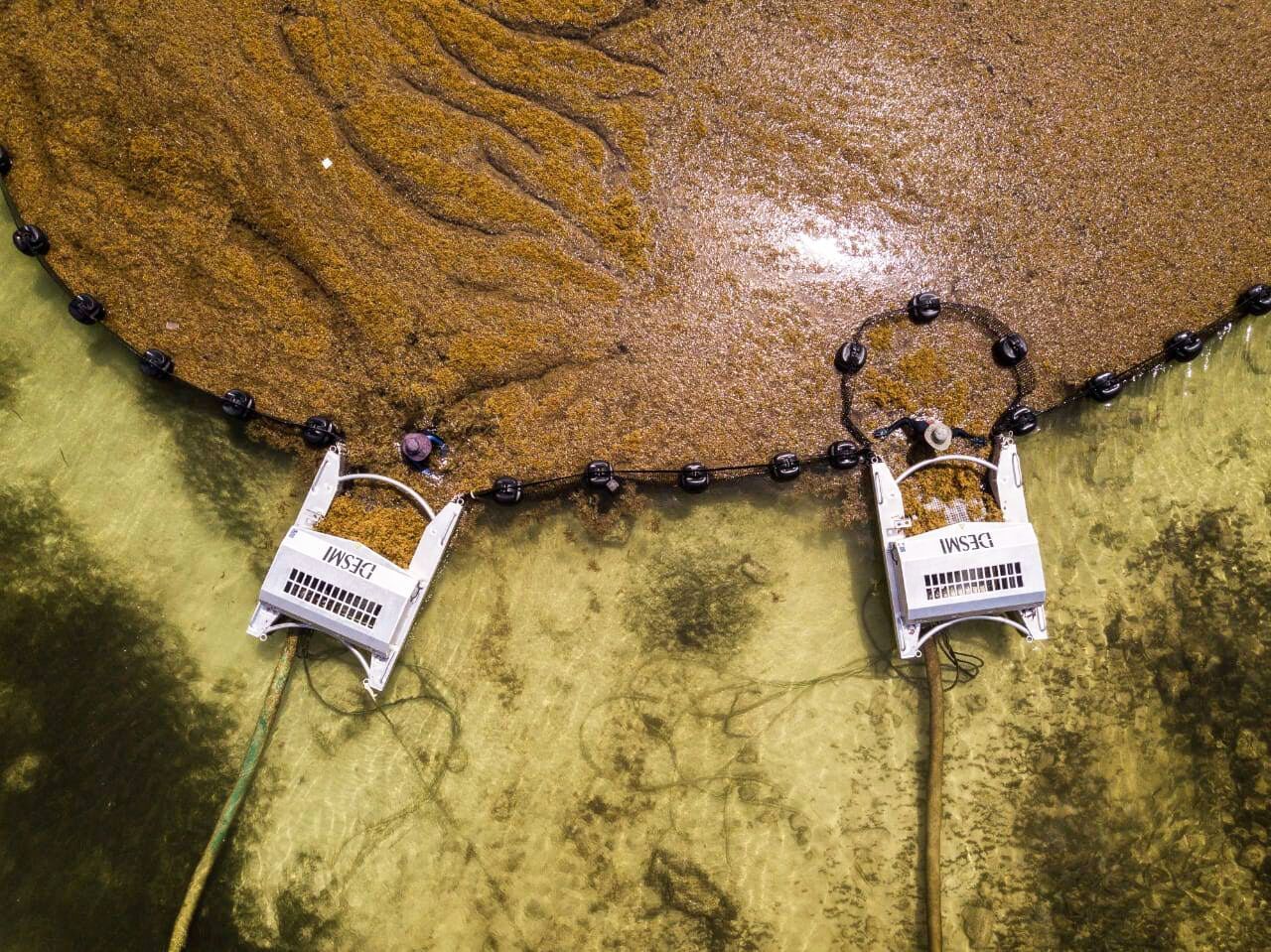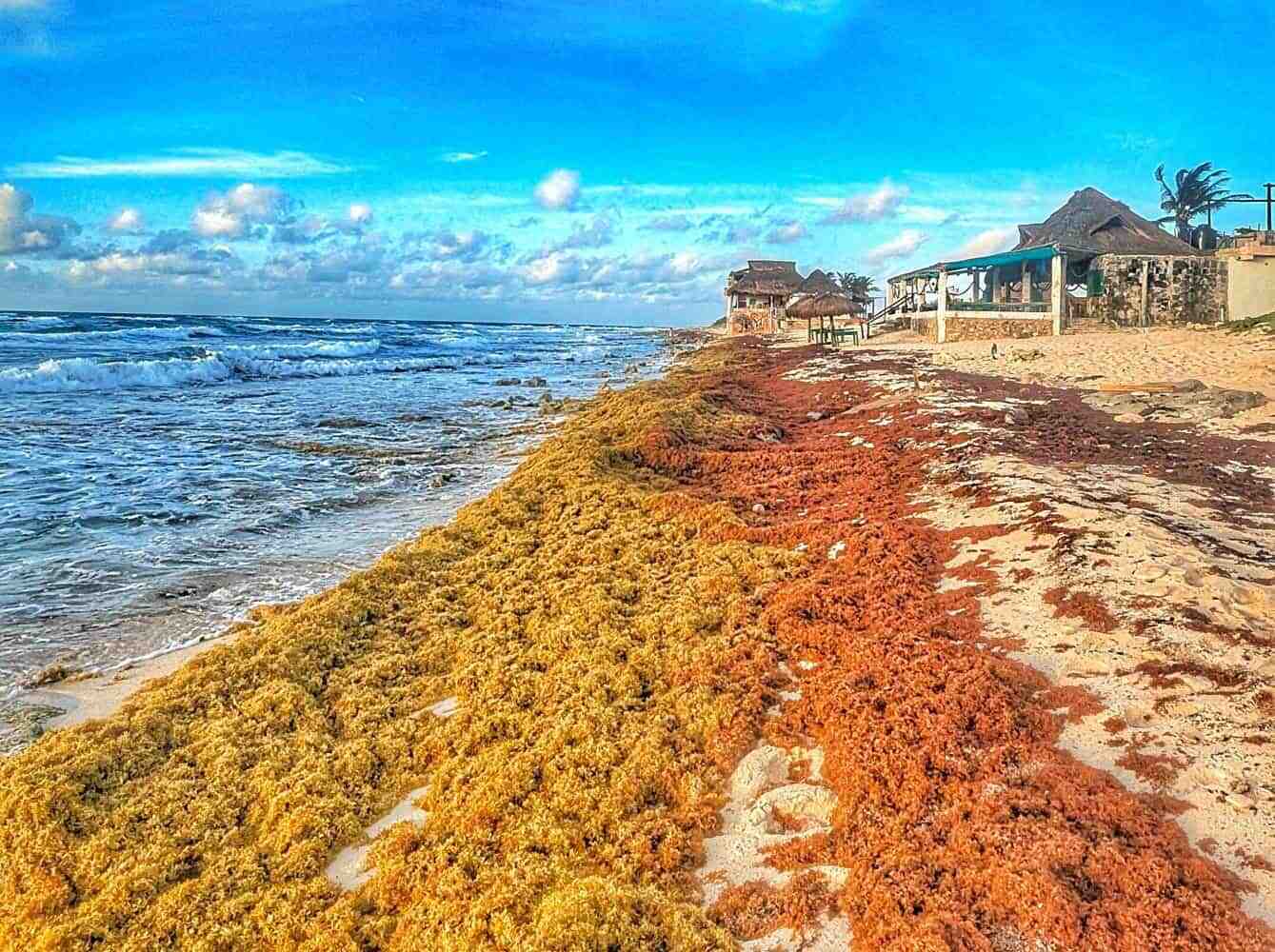A New Reality for Mexico’s Caribbean Coast
Not long ago, the beaches of Mexico’s Caribbean coast were famed for their white sand and turquoise water. Over the past decade, however, each spring has brought growing swaths of brown algae to shore. The Mexican Riviera— the coastline of Quintana Roo— now faces regular “invasions” of sargassum, a floating seaweed that is harmless in moderate amounts but becomes a disaster when tons of it wash up on land. Rotting piles give off a sulfurous odor, spoil the views, and drive tourists away. For full-time expats and real-estate investors, this annual “brown tide” has become a factor that cannot be ignored when planning life and business on the coast.
Why 2025 Could Be the Toughest Year Yet
2025 is shaping up to be one of the most severe sargassum seasons on record. Satellite data show that Atlantic seaweed volumes at the start of the year already exceed recent highs, and more than 40,000 metric tons were removed from Mexican beaches during all of 2024. Forecasts indicate the 2025 figure will be significantly higher. State authorities declared the start of sargassum season in mid-April, installing 9.5 km of floating barriers along the shore and deploying 11 specialized vessels to collect the algae.
In this article, we explain where sargassum comes from and why it is proliferating, what to expect in 2025–2026, the risks and inconveniences it poses for ecology, tourism, and real estate—and, most importantly, how expats and developers can adapt to this new reality.
Where Does All This Sargassum Come From?
Until the 2010s the Caribbean almost never saw beach-blanketing seaweed. Large landfalls were rare because most sargassum stayed far out in the Atlantic, inside the Sargasso Sea. Around 2011, however, a new phenomenon emerged: the Great Atlantic Sargassum Belt—a massive bloom stretching from West Africa clear across the ocean into the Caribbean. In peak years it holds 20 + million metric tons of algae, an amount unheard of in historical records.
Why Has It Exploded Since 2011?
Scientists point to a cocktail of human-driven factors:
- Warmer water & stronger sun. Higher sea-surface temperatures combined with bright tropical sunlight supercharge algae growth.
- Nutrient overload. Fertilizer runoff from farms, organic matter carried by big rivers such as the Amazon, and even Saharan dust settling on the ocean add the nitrogen and phosphorus sargassum loves.
- Changing currents & climate shifts. Altered wind patterns and ocean circulation now steer these floating mats toward the Caribbean and Mexico instead of keeping them in mid-ocean.
Together these forces create a “perfect storm,” allowing sargassum to form floating islands that drift westward. At sea the algae support marine life, but once the mats reach shore they rot, smell of sulfur, and turn postcard beaches into a cleanup nightmare.
Forecast for 2025–2026: Which Resorts Are in the Crosshairs
All indicators suggest that the 2025 season will be unusually heavy. Satellite monitoring over the winter already showed abnormally large algae concentrations in the Atlantic, and by April 2025 the total sargassum mass reached a new record. The first major landfalls on Mexican beaches are expected to begin in March–April, with the peak from May through August. In scope, 2025 could rival the record years of 2018–2019.
What about 2026? Accurate forecasts will emerge toward the end of 2025, but scientists warn that as long as the root causes remain, the risk of massive blooms stays high. Unless nature grants a reprieve—El Niño made 2024 relatively mild—2026 could be just as challenging. Whether it becomes a breather or another test will depend on next year’s ocean and climate conditions.
Below is a snapshot of the main Mexican-Riviera destinations and their relative sargassum risk for 2025–2026:
Below is a snapshot of the main Mexican-Riviera destinations and their relative sargassum risk for 2025–2026:
| Resort / Location | Sargassum Risk | Comment |
|---|---|---|
Tulum | High | Open coastline; heavy summer landfalls persist despite cleanup efforts. |
Playa del Carmen & environs | High | Heart of the Riviera Maya, often in the epicenter of “brown tides.” Beaches are cleaned, yet algae volumes remain huge. |
Puerto Morelos | High | Small resort between Cancún and Playa; severe seasonal impact and noticeable beach erosion. |
Cancún (Hotel Zone, east) | High | Main hotel strip faces the open sea and receives significant sargassum influx. |
Cancún (north, Costa Mujeres) | Low | Coastline shielded by Isla Mujeres; far fewer algae, beaches often stay clear. |
Cozumel Island (east coast) | High | Eastern shore exposed to the Atlantic—regular heavy landfalls. |
Cozumel Island (west coast) | Low | Leeward side faces the mainland; beaches usually remain clean even at peak season. |
Isla Mujeres | Low | Northern and western beaches see almost no sargassum; only the eastern tip is occasionally affected. |
Holbox Island | Low | Sheltered in a gulf; occasional patches possible but nothing like the Riviera Maya. |
Costa Maya (Mahahual & southern Quintana Roo) | High | Southern coastline open to the sea and frequently hit during the season. |
Bacalar Lagoon | None | Inland lagoon untouched by sargassum—an all-natural alternative to sea beaches. |
Pacific resorts (Puerto Vallarta, Los Cabos, etc.) | None | Sargassum is an Atlantic phenomenon; Pacific destinations do not face this issue. |
Local monitoring in late March 2025 confirmed the contrast: beaches on the northern Quintana Roo islands (Isla Contoy, Holbox, northern Isla Mujeres) remained completely algae-free, while stretches from Cancún to Tulum were already showing moderate to high sargassum levels. Currents and topography explain the difference: the islands shield parts of the coast, whereas open shorelines take the full hit.
Ecological Impact
When millions of tons of sargassum drift in the open ocean, they form floating reefs that can benefit fish, turtles, and seabirds. Once the seaweed reaches shore and begins to rot, however, the story changes:
- Oxygen crash and “dead zones.” Decomposing mats strip dissolved oxygen from near-shore waters within days, creating hypoxic conditions that kill starfish, sea urchins, oysters, and even corals.
- Disrupted turtle nesting. Thick piles block adults from laying eggs and trap hatchlings on their way to the sea.
- Mangrove stress. Rotting biomass can smother mangrove roots—the nursery for many marine species.
Heavy landfalls also reshape the beaches themselves. While small amounts of seaweed help build dunes, thousands of tons can accelerate erosion; shoreline retreat is already documented near Puerto Morelos.
Finally, people feel the stench. Decomposing sargassum releases hydrogen sulfide—the unmistakable rotten-egg smell—which can irritate eyes and airways and trigger headaches. During peak invasions, coastal residents often keep their windows shut.
Impact on Tourism and Real Estate
Mexico’s Caribbean economy lives off beach tourism. Millions of visitors fly to Cancún, the Riviera Maya, and Cozumel for postcard-perfect shores. When they instead meet piles of brown algae and a sulfur smell, many cancel trips—or spend their holiday by the pool instead of the sea. According to the Inter-American Development Bank, even a moderate bloom (only about 4 % of total Atlantic sargassum reaching Mexico) cut tourist arrivals in Quintana Roo by 11.6 % between 2016 and 2019.
Beyond lost revenue, businesses face direct costs. In 2024 the state government spent MXN 125 million (≈ USD 6.5 million) on cleanup and beach defenses, while hotels in the hardest-hit zones paid hundreds of thousands of dollars for daily removal and floating barriers—now a permanent budget line item.
Small coastal businesses suffer too. Restaurants and beach clubs lose diners; few want lunch amid a rotten-egg odor. Tour operators cancel boat trips when water is murky or engines clog with algae. Fishers report lower catches as fish flee near-shore “dead zones,” and nets and outboards get damaged by the weed.
Real-estate demand hasn’t collapsed, but developers are adapting. New projects budget for beach-protection crews, drainage against stagnant water, and buildings set farther back or on raised pads to reduce odor issues. Buyers now routinely ask how vulnerable the local beach is and what mitigation is in place. Prices remain stable, yet units on the most affected stretches take longer to sell—many clients don’t want to face months of “brown tide” every year. Areas with cleaner water, such as northern Cancún or the nearby islands, gain a clear edge in buyers’ eyes.
Practical Tips: How to Live and Build on the Coast During Seaweed Season
Despite seasonal challenges, hundreds of thousands of people continue to live, work, and vacation on Mexico’s Caribbean coast. Sargassum isn’t a reason to give up the dream of a seaside home—but you need to be prepared. Here’s how to minimize risks and discomfort:
- Choose your location carefully. When scouting a home or lot, review the area’s sargassum history. Compare how badly local beaches were hit in past years. Northern Cancún and certain islands, for example, see far less seaweed than the open shores of Tulum.
- Ask developers about protection measures. Buying coastal property? Find out what defenses are in place. Does the complex have its own beach-cleaning crew? Do they deploy offshore barriers? Who is responsible for keeping the shoreline clear? The answers reveal how ready the project is for “brown tides.”
- Plan daily life for peak season. If you live on the coast year-round, have a strategy for the dirtiest months. Keep windows shut, run AC or an air purifier to block odors, and spend downtime at the pool or on cleaner beaches (local communities and tracking sites post daily sargassum maps).
- Stay flexible in tourism businesses. Own a beachfront restaurant or hotel? Offer alternatives when the sea isn’t inviting. Create a cozy pool area, promote cenote or nature-reserve tours—give guests memorable experiences even without the beach. Expats in tourism likewise diversify services so they’re not sea-dependent.
- Follow forecasts and news. Use online monitoring tools such as the Red de Monitoreo del Sargazo and scientific bulletins. They warn of large blooms in advance, letting you adjust plans—shift beach days, schedule errands in town, or travel elsewhere during peak landfalls.
Remember: no individual can solve the sargassum problem, but everyone can adapt. Locals now treat “seaweed season” much like the rainy season—knowing it doesn’t last forever and preparation makes all the difference.
How Authorities and Businesses Are Responding
Mexico’s government and private sector are working hard to blunt the impact of recurring blooms. In Quintana Roo, the Navy coordinates a multi-layer response that includes:
- Monitoring & early warning. The Atlantic is tracked 24/7 by satellite, giving beach towns advance notice when large mats are on the way.
- Offshore barriers & skimmers. As a “wave” approaches, floating booms and nets are deployed to hold it back or steer it away. Special sargassum-collector vessels harvest the algae in open water before it can reach shore.
- Daily beach cleanup. Crews with heavy equipment clear the sand every day, hauling the seaweed to disposal sites so it doesn’t rot in place.
These efforts can’t stop every landfall—storms can breach any barrier—but without them the damage would be far worse, so funding for anti-sargassum programs increases each year.
Private-sector initiatives. Hotels hire extra staff and machinery, some install their own offshore booms, and tour operators pivot to cenote, lagoon, or archaeological excursions when water quality drops.
Long-term innovation. Entrepreneurs are giving collected algae a “second life.” In Puerto Morelos, compressed sargablocks made from seaweed are already being used to build houses. Other start-ups are testing sargassum-based fertilizers and even biofuel. Millions of tons can’t yet be recycled, but every ton repurposed means less waste in landfills.
Regional cooperation. Caribbean nations are pushing for international recognition of sargassum invasions as a climate-change impact and for funding to combat it. Progress is slow, so for now each coastal community still depends on its own resources and ingenuity.
Conclusion: Living with the “Brown Tide”
Sargassum invasions have become a regular part of life on Mexico’s Caribbean coast. Residents, businesses, and authorities now treat “seaweed season” much like the rainy or hurricane season—something expected, manageable, and best addressed with preventive measures. For expats and investors, this simply means planning with a bit more attention and flexibility than before.
Yet the Mexican Riviera remains a unique destination. For most of the year its beaches are paradise, and during the difficult months locals have learned to enjoy alternative activities. Sargassum is a nuisance, not a deal-breaker: it merely calls for a more cautious approach. For developers and officials, the algae challenge has already spurred innovation and a stronger commitment to environmental stewardship. For future residents, it is a reminder to weigh ecological factors when choosing a home.
Put simply, the Riviera Maya hasn’t lost its appeal—it just demands smarter planning. Sargassum is a serious challenge, not a sentence. Stay informed, be prepared, and you can still savor life in a tropical paradise. Keep your finger on nature’s pulse, act proactively, and no seaweed will cloud your Mexican happiness.





